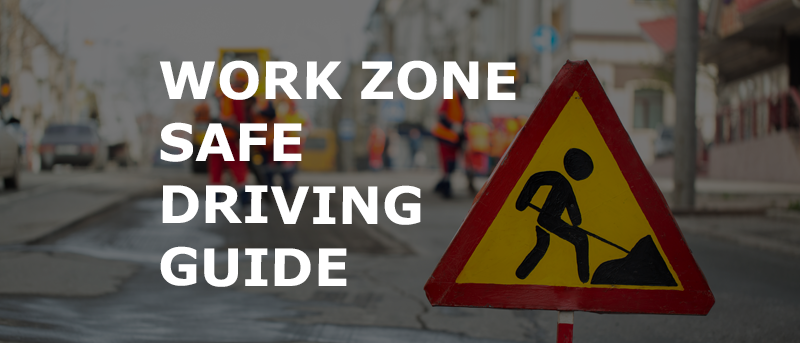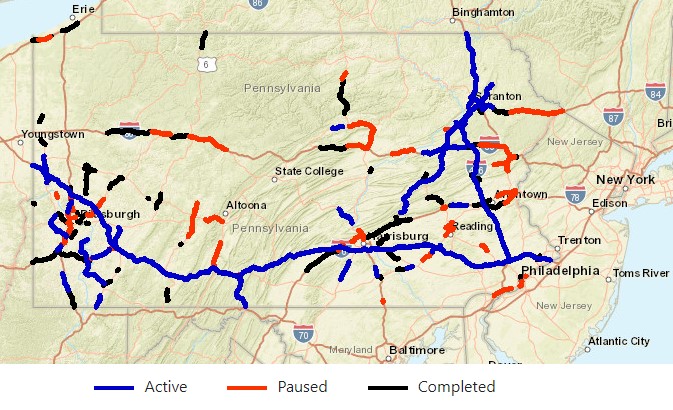Furry Friends Cause Trucking Border Delays At Canadian Border
To prevent reintroduction of rabies carried by dogs into the United States, new CDC regulations require proof of healthy pets at border crossing. Truckers who
We are a team of DOT Compliance and Licensing Professionals helping trucking and transportation companies remain safe, compliant, and profitable.
CNS or Compliance Navigation Specialists is DOT Compliance company that assists trucking and transportation companies remain DOT Compliant. We are part of a network of companies, CNS Companies, specializing in services related to the transportation, manufacturing, construction, service, education and medical industries.

A full-scale DOT Compliance Program managing a long haul carrier’s safety, compliance, licensing and more.
Learn more >>>
A DOT Compliance Program that keeps motor carriers compliant with the 6 Basic DOT Regulations required of all carriers.
Learn more >>>
Our Short-Haul/Construction Program is a full-scale program designed for private carriers that do not haul for-hire.
Learn more >>>
Our most comprehensive DOT Compliance Program, operating as your company’s off-site Safety Director or assisting your current safety personnel.
Learn more >>>
Our Non-CDL Program is a full-scale program managing safety, compliance, licensing and more for moving companies, couriers, landscapers, or any company subject to DOT regulations and does not employ CDL drivers.
Learn more >>>
Our DOT Audit Services cover a number of different types of DOT Audits that new and existing carriers will be subject to.
Our DOT Driver Services help trucking companies and carriers to stay compliant as they grow and hire more drivers.
Our DOT Vehicle Services focus on ensuring your vehicles are compliant with DOT Regulations, which is just as important as your drivers.
Our DOT Services for Special Carriers focus on companies outside of the typical motor carrier, like HAZMAT, Passenger and Bus Carriers.
CNS is part of a group of companies that offer other necessary services for the trucking and transportation industry, such as Commercial Trucking Insurance, CDL Training, Online Training Course, and even Healthcare.
Our DOT Licensing Services will cover you whether you are an existing company or just starting a trucking company. Our DOT Licensing Specialists can help you get up and running and in days with your DOT number, MC Authority, EIN, UCR, IFTA, 2290 HVUT, Fuel Taxes and can even set you up to get your Commercial Driver's License (CDL) with CNS Driver Training Center.
Our DOT Licensing Specialists will help you with every aspect of starting a trucking company. All you need to do is choose a name for your trucking company.
You will need to ensure your DOT Number, MC Authority, Vehicle Registration, etc. is all set up properly when you start your trucking business.
Our Licensing Specialists can help with all aspects of filing and renewing licenses, fuel taxes, etc.
CNS is part of a group of companies that offer other necessary services for the trucking and transportation industry, such as Commercial Trucking Insurance, CDL Training, Online Training Course, and even Healthcare.
To prevent reintroduction of rabies carried by dogs into the United States, new CDC regulations require proof of healthy pets at border crossing. Truckers who
CNS or Compliance Navigation Specialists is DOT Compliance company that assists trucking and transportation companies remain DOT Compliant. We are part of a network of companies, CNS Companies, specializing in services related to the transportation, manufacturing, construction, service, education and medical industries.
CNS Companies is a network of companies specializing in services related to the transportation, manufacturing, construction, service, education and medical industries. Our DOT Compliance division is handled by Compliance Navigation Specialists, CNS Insurance handles Commercial Truck Insurance, CDL training is managed by the CNS Driver Training Center and healthcare is managed by CNS Occupational Medicine.
We are a team of DOT Compliance and Licensing Professionals helping trucking and transportation companies remain safe, compliant, and profitable.
CNS or Compliance Navigation Specialists is DOT Compliance company that assists trucking and transportation companies remain DOT Compliant. We are part of a network of companies, CNS Companies, specializing in services related to the transportation, manufacturing, construction, service, education and medical industries.

A full-scale DOT Compliance Program managing a long haul carrier’s safety, compliance, licensing and more.
Learn more >>>
A DOT Compliance Program that keeps motor carriers compliant with the 6 Basic DOT Regulations required of all carriers.
Learn more >>>
Our Short-Haul/Construction Program is a full-scale program designed for private carriers that do not haul for-hire.
Learn more >>>
Our most comprehensive DOT Compliance Program, operating as your company’s off-site Safety Director or assisting your current safety personnel.
Learn more >>>
Our Non-CDL Program is a full-scale program managing safety, compliance, licensing and more for moving companies, couriers, landscapers, or any company subject to DOT regulations and does not employ CDL drivers.
Learn more >>>
Our DOT Audit Services cover a number of different types of DOT Audits that new and existing carriers will be subject to.
Our DOT Driver Services help trucking companies and carriers to stay compliant as they grow and hire more drivers.
Our DOT Vehicle Services focus on ensuring your vehicles are compliant with DOT Regulations, which is just as important as your drivers.
Our DOT Services for Special Carriers focus on companies outside of the typical motor carrier, like HAZMAT, Passenger and Bus Carriers.
CNS is part of a group of companies that offer other necessary services for the trucking and transportation industry, such as Commercial Trucking Insurance, CDL Training, Online Training Course, and even Healthcare.
Our DOT Licensing Services will cover you whether you are an existing company or just starting a trucking company. Our DOT Licensing Specialists can help you get up and running and in days with your DOT number, MC Authority, EIN, UCR, IFTA, 2290 HVUT, Fuel Taxes and can even set you up to get your Commercial Driver's License (CDL) with CNS Driver Training Center.
Our DOT Licensing Specialists will help you with every aspect of starting a trucking company. All you need to do is choose a name for your trucking company.
You will need to ensure your DOT Number, MC Authority, Vehicle Registration, etc. is all set up properly when you start your trucking business.
Our Licensing Specialists can help with all aspects of filing and renewing licenses, fuel taxes, etc.
CNS is part of a group of companies that offer other necessary services for the trucking and transportation industry, such as Commercial Trucking Insurance, CDL Training, Online Training Course, and even Healthcare.
To prevent reintroduction of rabies carried by dogs into the United States, new CDC regulations require proof of healthy pets at border crossing. Truckers who
CNS or Compliance Navigation Specialists is DOT Compliance company that assists trucking and transportation companies remain DOT Compliant. We are part of a network of companies, CNS Companies, specializing in services related to the transportation, manufacturing, construction, service, education and medical industries.
CNS Companies is a network of companies specializing in services related to the transportation, manufacturing, construction, service, education and medical industries. Our DOT Compliance division is handled by Compliance Navigation Specialists, CNS Insurance handles Commercial Truck Insurance, CDL training is managed by the CNS Driver Training Center and healthcare is managed by CNS Occupational Medicine.

Driving in road construction areas can be among the most dangerous type of driving you will encounter.
Spring means warmer weather is here and construction projects begin to improve America’s roadways.
With the 2021 Infrastructure Investment and Jobs Act in affect, the trucking industry will see a lot of mega projects on the roads, with $110 billion going to repair and rebuild roads and bridges.
For example, the Brent Spence Bridge is a six-year construction project in Kentucky over the Ohio River that will add a second span west of the original bridge for use by local traffic and add new lanes to a five-mile stretch of Kentucky highway and a one-mile piece of the Ohio highway approaching the bridge.
Construction work zones, with their restrictive space and high level of activity, are high risk areas for serious accidents and injuries.
As a truck driver, it is best to plan your trip before setting out on the road. To start you would need to research your route and, when possible, avoid work zones and use any detours that are available.
Let’s discuss safe driving techniques when approaching, traveling though, and dealing with aggressive drivers around construction work zones.
Work zones often include lane closures and narrow or shifting lanes with travel conditions that may change on a daily or weekly basis.
On average, over 700 fatalities occur in work zones each year. In 2020, large trucks made up nearly one-third of fatal work zone crashes.
Commercial motor vehicle (CMV) and passenger vehicle drivers both need to be particularly careful while traveling through work zones as large trucks and buses have limited maneuverability and large blind spots, both of which make operating in these areas more challenging.
When entering the work zone:
When traveling through a work zone:
When dealing with aggressive drivers in a work zone:
It is important to note that each scenario mentions reducing your speed. Lane closures, traffic pattern shifts and reduced speeds are common in work zones.
This is not just important for safety but will reduce the chances of speeding violations and fines that negatively affect your CSA scores, insurance premiums, and broker relationships.

Many states that want to maintain and improve roads and bridges use work zone speed enforcement programs to target speeding and unsafe driving vehicles for violations and fines.
For example, Pennsylvania has a three-year-old Automated Work Zone Speed Enforcement pilot program that hopes to decrease distracted driving and speeding in work zones.
The program uses portable automated speed enforcement systems to provide enforcement of excessive speeding (11+ mph) in active work zones.
In 2022, Pennsylvania’s Automated Work Zone Speed Enforcement program completed its second full calendar year of operation, fulfilling their program goals to:
Since the start of enforcement in March 2020 through the end of 2022, the program has completed 8,868 deployments and issued over 1 million notices of violation, collecting over $7 million in fine remittance.
You can see a mobile-compatible map and table is available here.
Also, in Pennsylvania, all motorists are required to travel with their headlights turned on in all posted work zones, not just active work zones. It is necessary for drivers in vehicles with daytime running lights to turn on their headlights to activate their taillights.
As a Motor Carrier, it is your responsibility to ensure that your drivers are trained properly and that starts with hiring good drivers.
This means you need to take the steps to smoothly manage the compliance requirements in DQ files, new driver on-boarding, driver safety training, drug testing, and more.
CNS knows this is a lot to manage, which is why our DOT Compliance Specialists have developed several DOT Compliance Programs focused on Proactive Safety Management (PSM), a mindset that will ensure your fleet’s safety and compliance is always in order and ahead of the FMCSA.
Our PSM Motor Carrier Program includes:
Learn more about our DOT Compliance Programs
For more information, contact us at 888.260.9448 or info@cnsprotects.com.

ATRI’s Research Advisory Committee (RAC) selected a diverse set of research priorities designed to address some of the industry’s most critical issues including workforce development,

Distracted driving is a major issue among all types of drivers but is an especially important concern for commercial motor vehicle drivers as it can

Motor carriers are responsible for ensuring that drivers are not operating while ill or fatigued. However, motor carriers, at their discretion, may authorize their drivers

In 2021, according to ATRI’s “Analysis of the Operational Costs of Trucking” report, the cost of trucking increased to its highest level ever in the
Our DOT Compliance Programs ensure it is your top priority and keeps your business running.
Receive the latest transportation and trucking industry information about FMCSA and DOT Audits, Regulations, etc.

ATRI’s Research Advisory Committee (RAC) selected a diverse set of research priorities designed to address some of the industry’s most critical issues including workforce development,

Distracted driving is a major issue among all types of drivers but is an especially important concern for commercial motor vehicle drivers as it can

Motor carriers are responsible for ensuring that drivers are not operating while ill or fatigued. However, motor carriers, at their discretion, may authorize their drivers
Join our monthly newsletter and stay up-to-date on trucking industry news and receive important compliance and licensing tips.
Join our monthly newsletter and stay up-to-date on trucking industry news and receive important compliance and licensing tips.